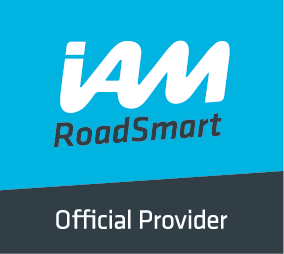Driving Tips from the St. Helens Group
Read our useful driving tips provided by Mark Farnworth, Group Vice-President or from other Group members where stated.
Browse by topic (click to view and then press back arrow)
ABS, Books, 'Automatic' Gearboxes, Dual carriageways, Country driving, Eco driving, Handbrake, Horses, Motorway driving, Observation, Overtaking, Roundabouts, Signalling, Spoken thought, System of Car Control, Terminology, Town Driving, Traffic lights, Vehicle balance
Observation
Observation: A basic skill of advanced driving. Good powers of observation demand practice, concentration and thought. Your eyesight should conform to the legal minimum (the ability to read a number plate at 20.5m (67ft) and you should know at a glance what any road traffic sign is telling you and react if necessary. Dropping further back from large vehicles in front enables you to see more of the road and traffic ahead. Gentle adjustment of road position can improve sight lines through bends, particularly in country areas.
Selective Observation: Good observation is essential but the refinement of this skill is learning to be selective in what is observed and to distinguish what should be acted upon and what can be ignored. There is a range of visual information that helps us to become safer drivers.
- Allow for changes in the road surface that will affect grip e.g. mud outside a farm or leaves on the road.
- Parked vehicles; doors may open, pedestrians may emerge from between the vehicles, cars may pull out.
- A line of telephone poles can give advance warning of a bend (beware that occasionally they can track straight on while the road bends). Note that cyclists can wobble or steer around potholes or drains as you pass.
- Children can dash into the road without looking. An older person might not see or hear you coming. A dog off a lead could do anything.
- Pedestrians in wet weather often hurry for shelter or keep their heads down in rain. Give them extra attention.
- A parked vehicle with its reversing lights on is likely to move backwards.
- Drop further back from a driver ahead trying to overtake when there is no opportunity.
- Drop further back from a driver ahead who is paying more attention to finding a particular address in town than to the road.
- Reflections in a shop window at a junction or corner can show you an approaching vehicle before you actually see it.
Rear Observation: Your mirrors should be used to study the speed and distance of vehicles behind over a long distance. Always make rear-view checks when the situation ahead is safe, giving extra thought to their timing when traffic and road conditions ahead are changing quickly. Supplement your use of the interior mirror with the door mirrors as well. If you are uncertain of the situation in mirror blindspots (e.g. joining a motorway), glance over your shoulder as well.
By Mark Farnworth
Disclaimer: Driving is never a black and white activity, but full of grey areas, therefore neither I nor my fellow Observers in the St Helens & District Group of Advanced Motorists are liable for any consequences you may experience as a result of reading our advice. You are the driver. You should be in control of your vehicle at all times.

